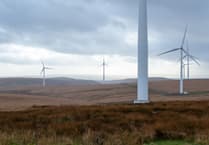In his monthly column, retired airtight technician Trevor Clark gives his advice on how to cut energy costs through heating efficiency.
No matter which heating we use there are unavoidable inefficiencies (losses) as a result of the equipment or processes involved in generating the energy.
The efficiency of the energy generation equipment must be considered when considering how much ‘Energy Input’ is required.
This is generally more than the amount of energy actually required, it’s the amount as a consumer you pay the utility company, and includes the energy losses within the equipment.
Say your boiler is rated for 10 kilowatt output, but it is only 90% efficient, this means that to get the 10kW (100%) of the rated energy it needs to input 110% to cover the energy losses. Put another way the energy input is 11 kW, and while you pay 20 pence per kW - £2.20 for £2.00 actual energy to heat the building.
A type of renewable heating is the use of heat pumps. Heat pumps don’t generate heat; they move energy from a low value and increase this energy value by between 200 and 500%.
Generally for the same energy output of 10 kW, we only need to input 4 kW of energy at 20 pence - paying £0.80 for the same 10kW of energy at 250% efficiency.
There are only three basic types of heat pump:
1. Air 2 Air AKA mini-split air conditioner: although called an AC unit it does not fully condition the air - they are correctly termed as ‘comfort coolers’ or heaters when fitted with a ‘reversing valve’. These supply heating or cooling air flow and need a separate unit to store hot water - using a smaller version of option two ‘Air2Water’.
2. Air 2 Water AKA air source HP: removes energy from the air and passes it to circulation water for heating inside the house - the most common replacement for fossil fuel boilers.
3. Water 2 Water AKA Ground Source HP: circulates a glycol mixture through a bore hole or loop of pipes buried into the ground. Also can use the energy from rivers or large volumes of water (lakes or sea) directly or via a pipe loop.
When installing these heat pumps, more space may be required for an insulated storage tank that allows hot water to be available ‘instantly’.
The other types of domestic renewable heating systems include ‘direct heating’.
As the name implies, these use electric directly to heat an element for heating air or water on both off peak and full price day rate electricity - such as electric fires, kettles, immersions, fan heaters etc.
There is also ‘off peak storage’ (low temperature) - harking back to the 1960’s when ‘off peak storage heaters’ were popular and electricity was ‘cheap’. Working on the same principle; to use electricity while it is cheaper and storing the energy in a well insulated container for release later when the energy is required.
Finally, there is ‘thermal energy storage’ (high to very high temperature) - where a material collects the energy while it is cheap (off peak) and within a highly insulated ‘box’ and storing it at very high temperatures until it is required.
There are electric thermal energy store units similar in size to existing boilers coming to market that could be direct replacements for a fossil fuel boiler that use cheap off peak electricity to store enough energy to run hot water and central heating system as well as large energy storage tanks that perform a similar function.
There are many new products coming to the market, which have improvements in the insulation to contain the energy and control of release when the energy is required and the storage materials can now be kept at high temperatures without degrading.
It must be said that renewable energy relies on electricity generated by wind and water turbines, hydro fall, sea wave and current, and solar PV other than fossil fuels. It cannot truly be called renewable energy if not.




